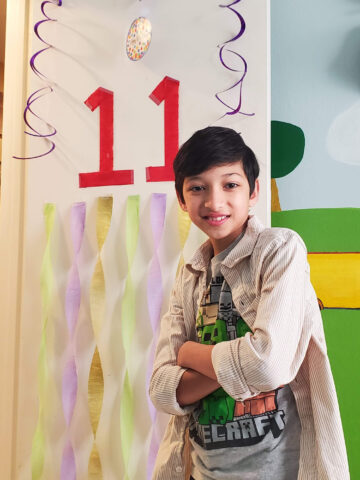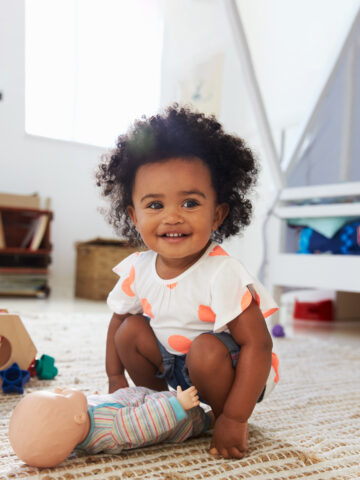By Erin Karavedas, occupational therapist at CHOC
As a baby crawls around a room touching objects, playing with toys, listening to their mother or father sing songs, or putting things in their mouth, they are doing much more than simply playing. They are using their senses to learn about and explore their environment. Parents can enhance this learning by providing positive sensory experiences.
Sensory play or experiences are activities that allow your baby to interact with their surroundings and learn about their world. Through this type of exploration and play their brains grow and mature as connections are made in the brain.
When a child is born, their brain is ready to absorb information about their environment. They’re already learning long before they are walking and talking. This learning takes place through touch, hearing, sight, taste, smell and movement. They hear our voices, chew on toys, love bouncing and touch anything they can.
The more positive sensory experiences a baby has, the stronger these connections become. By providing your child with a wide range of experiences that involve their senses, they develop strong brain pathways. Sensory play not only positively impacts your baby now, but the connections that are made help to support learning and development even into adulthood. A baby who is not given the same diverse set of opportunities and is kept in a swing all day or is kept in a very dark quiet environment can have their learning and brain development stunted by lack of exposure to sensory stimuli.
Sensory Experiences by Age
Parents can have a direct impact on the development of their baby’s brain through providing a variety of positive sensory experiences such as:
- 0-3 months: Singing, bouncing, talking, swinging, bath time, massage, hanging a colorful mobile for the baby to look at, placing rattles in baby’s hand for exploration
- 3-6 months: At this point you can add tummy time, play with food (purees), reading, encourage baby to touch fabrics with different textures, and shaking rattles
- 6-9 months: Now you can start to blow bubbles, play in different positions on the floor, play with cause and effect toys and games such as play peek-a-boo
- 9-12 months: Now is the time to add water play, crawl/walk/play on grass or sand, play on swings and slides, tasting and exploring a variety of foods, finger painting, play-dough
It is important to note that children can become over-stimulated or overwhelmed when given too much sensory input. A child might enjoy some sensory play and become very uncomfortable with another type of sensory play. If your child is having a hard time tolerating an activity, don’t avoid it altogether. The best option is to take a break and then try to gradually expose your child to that specific input. For example, some children have a hard time with messy play (this can be playing with food, finger painting, shaving cream, wet sand, etc.). Instead of forcing them to engage in messy play you can start in the bath tub, with just a small amount of shaving cream where they have the ability to wash it off; or you can just put 1 drop of paint on the paper and encourage them to touch it as opposed to pouring it all over the paper and placing their entire hand in it. Your child’s behavior will let you know how comfortable they are with an activity.





